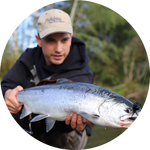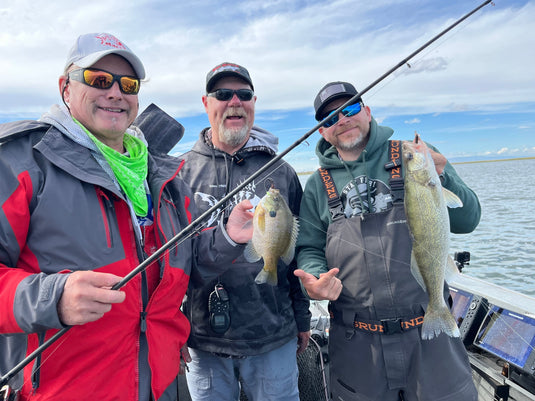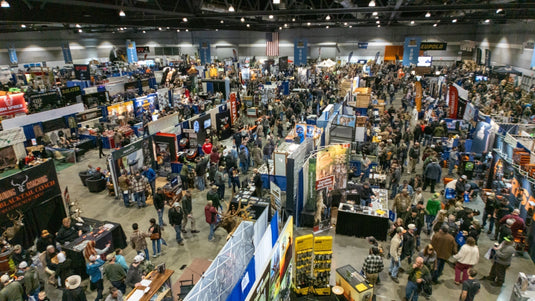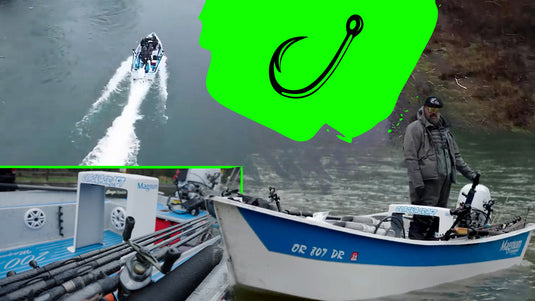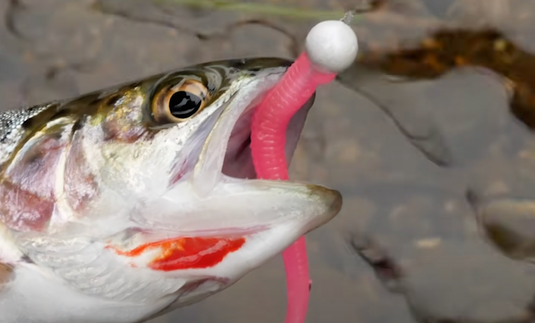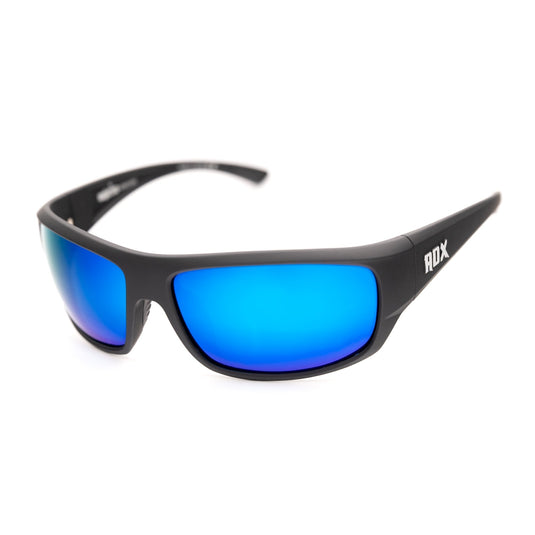Learning to Love the Spawn|Bass Fishing
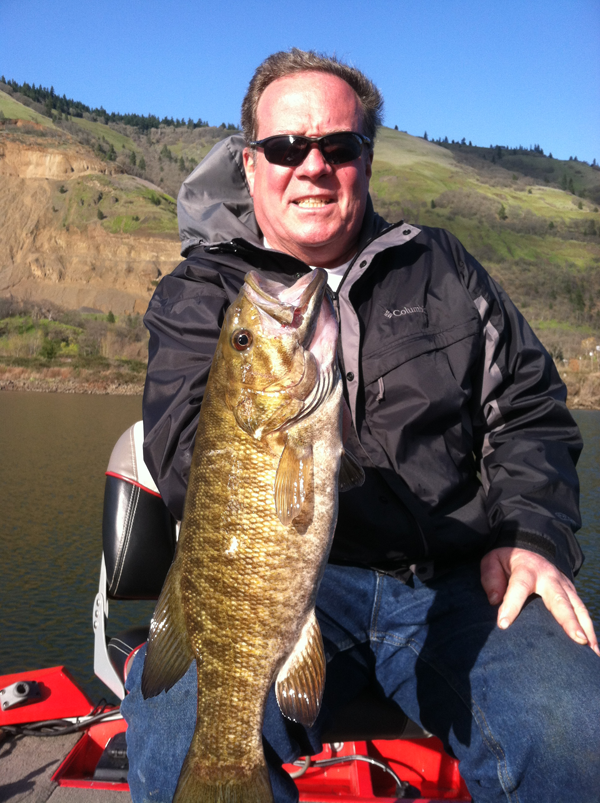
 A lot of things have changed since the beginning of time! The human kinds first fishing pole was a giant stick with some woven string! Intellegence of men has grown with the growth of the earth. Mankind has made great technological leaps, but his limited understanding of the weather, especially when it influences water temperature and Bass spawning, can be one of the greatest hurdles for a Bass fisherman.
A lot of things have changed since the beginning of time! The human kinds first fishing pole was a giant stick with some woven string! Intellegence of men has grown with the growth of the earth. Mankind has made great technological leaps, but his limited understanding of the weather, especially when it influences water temperature and Bass spawning, can be one of the greatest hurdles for a Bass fisherman.
The first thing to do, regarding the spawn, is to forget the calendar. Months of the year can be a good general indicator, but weather cycles have their own, often totally unpredictable, ways. In my opinion ‘Climate Change’ merely reflects man’s improved ability to observe atmospheric fluctuations which have gone on for millennium, and hysterics over ‘global warming’ is unmerited, actually bad science, See Here…(http://davehatter.wordpress.com/2009/04/17/global-warmingclimate-change-is-the-greatest-scam-in-history/). But in fact, I’m a little disappointed. Imagine the great Bass fishing we could have in the Pacific Northwest, if there really was global warming!
Water temperature, not days on a calendar, is the one reliable indicator to predict Bass spawning activity. It rules the lives of Largemouth Bass, and even their more temperature-resilient cousins, Smallmouth Bass. For simplicity’s sake, and to generalize about their activity and the most likely effective baits for fishermen to use, it helps to divide the spawn into three general categories: Pre-spawn, spawn or mid-spawn, and post-spawn.
As I write, the temperature in my favorite home lake is now passing the 50 degree mark. This means that Bass there are in full pre-spawn mode, forsaking deeper haunts, staging or cruising future spawning areas, and beginning to feed in earnest in order to support not only their speeding-up metabolism, but also to prepare for the energy demands of the spawn. Pre-spawn can begin as early as March or as late as May, depending on meteorological trends. Have an early warming Spring, and pre-spawn is on! If it’s a long, cold, drawn-out Spring, as we have suffered through for the last three years, spawning can begin way later.
For Largemouth, 50 degrees marks the beginning of pre-spawn. For Smallmouth, it can begin several degrees cooler than that. The fine Columbia River Gorge Smallmouth in the picture was one of three active feeders we discovered on a recent venture up the Gorge. They were all in 6 feet of water or less, and all chased and hit rattling lipless crankbaits. The water temperature averaged about 46 degrees. One fish battled like a ‘hot’ summer Bass, while the others were a little less aggressive. A few more degrees and the Smallmouth pre-spawn bite will be on in earnest up there.
For pre-spawn Largemouth, once the water is in the 50 degree range and climbing, the best baits are, I believe, jig and grub combinations with a pork rind, not a plastic, as the trailer, or willowleaf spinnerbaits in chartreuse and white, slow-rolled. For the jigs, a slower fall is best, so don’t go with your Summer thumpers. A 1/4, 3/8 or 1/2 ounce jig, either black, pumpkin green or brown, is your best bet. If the water is very clear, go with pumpkin green and a dark trailer. If it’s murky, go with black or brown and a contrasting trailer. Don’t waste a lot of time slow-crawling jigs over long distances. Quietly patrol the near shoreline areas, flipping or pitching to objects like laydown trees, stumps, sunken brush and underwater objects like boulders or logs. A quieter entry of your jig is best.
If you don’t get bit on the drop or the short retrieve back, move on to the next object. The big pre-spawners are cruising around, keying on structure, and so should you. If the weather takes a turn for the worse, remember that the fish will most likely simply tuck further into the shoreline brush, roots and features to wait it out, rather than return to winter depths.
Even in cooler water, do not neglect a little fun with topwater frogs. Experiment with your retrieve to ‘walk’ or ‘wag’ the frog in one spot as much as possible. This same tactic will work during the spawn, if you are near a bed.
It is best to stay alert at all times, but during pre-spawn, use your most sensitive rod and pay close attention to ‘feel’ and to line movement. You may get light hits and not even know, otherwise. These spooky fish are seeing more light and more movement, and hearing more noise than they did all winter.
For pre-spawn Smallmouth I’m a big believer in lipless crankbaits, preferring the spendy Lucky Craft in red crawdad colors. These well-engineered baits keep their lipless action, even when the retrieve is very slow, where other lipless baits just die. A burning fast retrieve upstream of rockpiles should be tried as well. Spinnerbaits and stickbaits can work too, but I don’t even bother with my summertime favorite, Gary Yamamoto soft plastic grubs. They just don’t seem to work in the cold Gorge waters.
When water temperature warms up into the 60’s (a little cooler than that for Smallies) the spawn is on, though different parts of a lake or river will warm differently, and fish will not all be spawning at the same time. From about 1 foot down to 10 feet for bigger Largemouth, and from about 3 feet down to 18 feet for Smallmouth, Bass are making their beds and laying eggs. Smallies seem to respond to moon phase too, with a few days before the full moon often producing the most activity. Smallmouth eggs do not require as much sunlight as Largemouth, but both require warmth for success. Look for light areas on a dark lake bottom, if you are trying to spot Bass beds. Release as quickly and harmlessly as possible to ensure good future populations.
My favorite baits for the spawn include topwater stickbaits in Rainbow Trout pattern, twitched and moved slowly, or totally deadsticked, driving the bedding fish into a protective frenzy. I also rely on my old standby spinnerbaits. Cast well beyond spawning areas, then suddenly appearing near a bed, they can provoke a vicious strike. I have not had a lot of success dragging lizards or other soft baits through the beds. I even dragged one over the nose of a big sow one time and she just moved back and looked disgusted. Very humiliating for your fanatical Bassmaster! A small bluegill pattern swimbait brought in from different angles, or a slowly-descending ‘Gitzit’ type tube bait may also get your spawning Bass into attack mode. If you can actually see the fish, watch its pectoral fins. If it waves them around while moving toward your bait, you are going to get bit! Ah! The suspense! Don’t forget a twitching frog!
And now come the post-spawn ‘blahs.’ The fish have just gone through the most demanding activity they will face all year. Moving from their previous slow-living quarters in the depths, now searching for the best areas and building beds, laying eggs and milt, fighting off opportunistic predator species that go after eggs and young, these take such a toll on some fish that after the spawn, all they can do is suspend and rest. It may take them a couple of weeks to recuperate. Even so, these sometimes lethargic fish can be caught.
Some post-spawn Bass will be found out in deeper water, just suspending. They can be enticed with a helpless-looking topwater like a Zara Spook, and they may come up from quite a depth to take a whack at your performing bait. Other fish may hide under a weed bed, a pad bed, docks or brush piles. Try a repertoire of jigs, spinnerbaits, suspending jerkbaits, anything to give them a look at something tempting. My usual pattern is top to bottom coverage of the water column. I’ll also go from flashy and noisy to subdued and quiet baits. Give the fish a choice.
Summer is still a high-feeding time, with all kinds of tasty prey arriving from land, air and water, and not all areas of your favorite body of water will be too hot. Cool evenings, even night fishing, can be quite productive. I have many a nighttime picture of me and my buddy holding up big, fat Bass in our canoe or boat. Also, you know the fish will be moving around less so find the very best, most attractive cover and you have a good chance of finding a lunker waiting for a big, easy meal!
We’ll discuss the gamut of summertime Bass baits, for both Largemouth and Smallmouth, next time. If you are a Washington resident, remember that April 1st is time to have a new license. Don’t get April-fooled by a big ticket! Now get out there and find those huge, spawning fish. They’re out there waving their fins at you right now! Best of luck to you all,
Bassmaster Bob
Please check out our sponsor http://www.davestanglefree.com/



